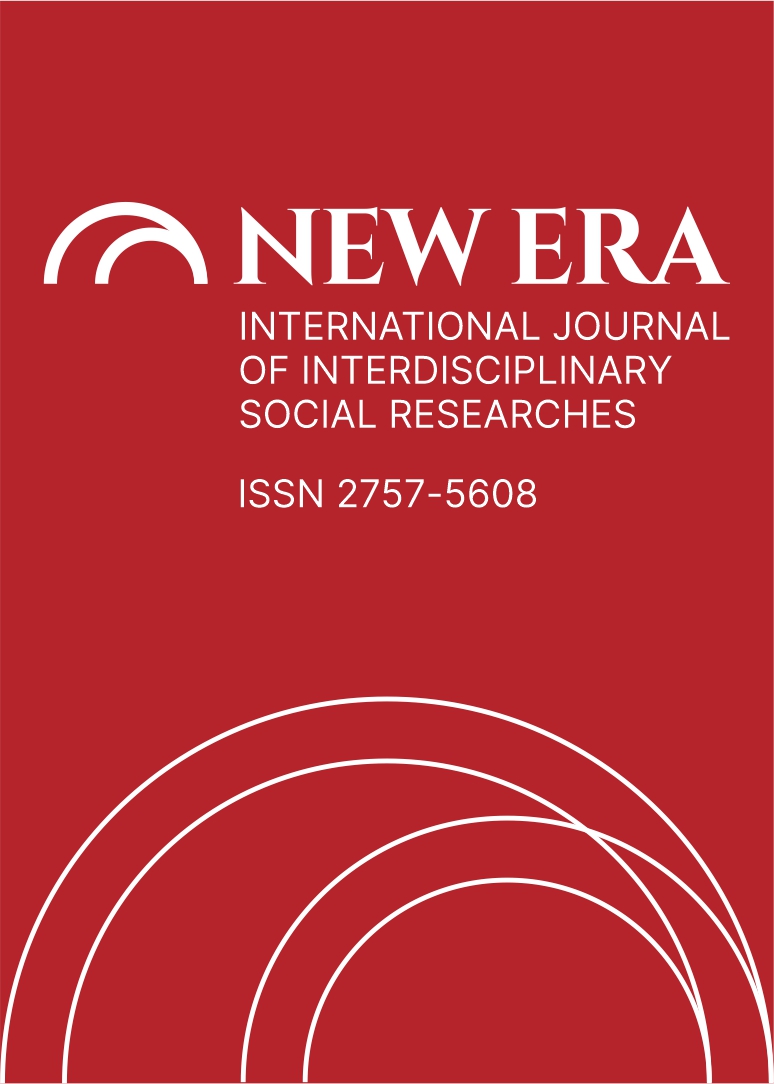DYSTOPIC REALITY IN THE UTOPIAN DREAM IN 1984 AND A CLOCKWORK ORANGE
DOI:
https://doi.org/10.5281/zenodo.8186357Keywords:
Utopia, Dystopia, George Orwell, Anthony Burgess, 1984, A Clockwork Orange, Enslavement, MechanizationAbstract
Abstract
The reflections of the two great world wars, which continue to affect their effects socially, psychologically and economically, are among the issues that should not be overlooked on literature. It is also known that many troubles that broke out especially after the Second World War caused great destruction on individuals. In particular, the destructions on individuals in the modern period have been the subject of utopian or dystopian works by many authors in terms of both criticizing existing governments or social orders and giving many recommendations and warnings for the future. George Orwell's 1984 and Anthony Burgess' A Clockwork Orange are also among dystopian works. Based on the idea that dystopian and utopian worldviews are accepted subjectively, it is possible to state that both works are also utopian world descriptions. In this study, the transformation of the world order, which is accepted as utopian for society in 1984 and A Clockwork Orange, into a dystopia for individuals will be discussed. The purpose of this article is to criticize that the uniform human model, which was tried to be created by governments in the post-war period, caused mechanization and enslavement. This policy of mechanisation has positive causes and implications for governments. However, for individuals who seek to exist in society, being a robot means both abstracting individuals from the broad outlines of society and normalizing a murder against their humanity. From this perspective, in George Orwell's 1984 novel, the thoughts of individuals are blocked by formations such as the Thought Police. On the other hand, in Anthony Burgess' A Clockwork Orange, human desires within the individual are attempted to be silenced and completely destroyed. This world order, which is tried to be created for the principal characters created to reflect many disorders as symbols of society, is transformed into a dystopia. In consequence of this article, the idea that any utopia is someone else's dystopia will be inferred.
References
Avcı, M. (2021). Ütopya İçinde Distopya: Herbert George Wells’in ‘Zaman Makinesi. Temaşa Felsefe Dergisi , 192-202, https://dergipark.org.tr/tr/pub/temasa/issue/66230/1020161.
Burgess, A. (2011). A Clockwork Orange. New York: Norton&Company.
Çağlayan, H. (2021, 10 14). Ütopya'nın Distopyası. Retrieved 07 01, 2023, from Sanatla Art: https://www.sanatlaart.com/utopyanin-distopyasi/
Eren, Z. (2018). The Uncivilizing Process of the West and Burgess’s Suggestion for Stopping this Process in a Clockwork Orange. 141-157, https://dergipark.org.tr/en/pub/fe/issue/40240/479544.
Müftüoğlu, M. (2015). Gündelik Hayatta Totalitarizm: George Orwell'ın 1984 Adlı Distopya Romanında İdeal Toplum Tasavvurları. Dumlupınar Üniversitesi Sosyal Bilimler Dergisi , 179-189, https://dergipark.org.tr/tr/pub/dpusbe/issue/4786/66053.
Orwell, G. (2000). 1984. London: Penguin .
Parrinder, P. (2011). Dystopias . In A. Burgess, A Clockwork Orange (pp. 265-269). London: Norton&Company.
Talalweh, M. W. (2022). Objective Correlative in George Orwell’s Nineteen Eighty-Four: Winston’s Varicose Ulcer. Eurasian Journal of English Language and Literature , 43-54, https://dergipark.org.tr/en/pub/jell/issue/71048/1124812.
Tuncer, Ö. (2019). Dystopic Imagination in Post War English Literature. 1-102.
Uysal, M. (2012). George Orwell’s 1984: Values and Anti-Utopia. Sosyal Bilimler Enstitüsü Dergisi , 133-142, https://dergipark.org.tr/tr/pub/sbedergi/issue/11258/134545.
Zengin, M. (2015). Anthony Burgess's Dystopian Vision in A Clockwork Orang: From Ultra Violance and Dehumanization of Man to Reliance on HUman Goodness. İnönü Üniversitesi Uluslararası Sosyal Bilimler Dergisi , 91-102, https://dergipark.org.tr/tr/pub/inijoss/issue/28895/420040.
Downloads
Published
How to Cite
Issue
Section
License
Copyright (c) 2023 NEW ERA INTERNATIONAL JOURNAL OF INTERDISCIPLINARY SOCIAL RESEARCHES

This work is licensed under a Creative Commons Attribution-NonCommercial 4.0 International License.


